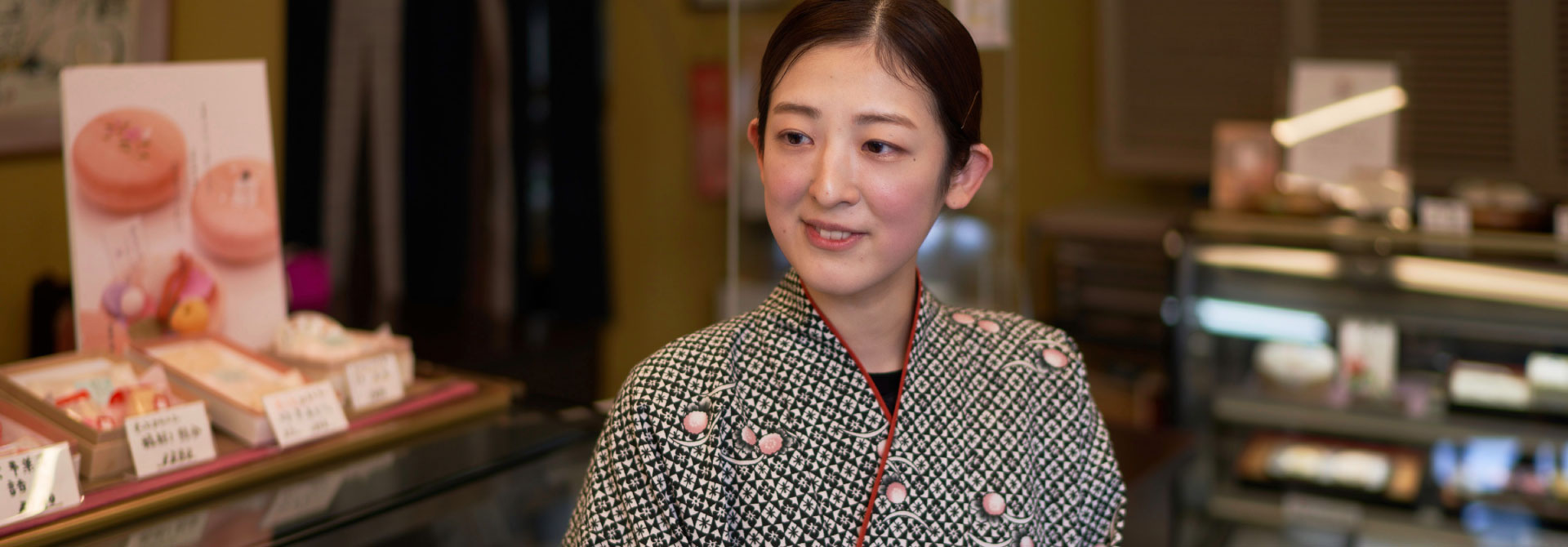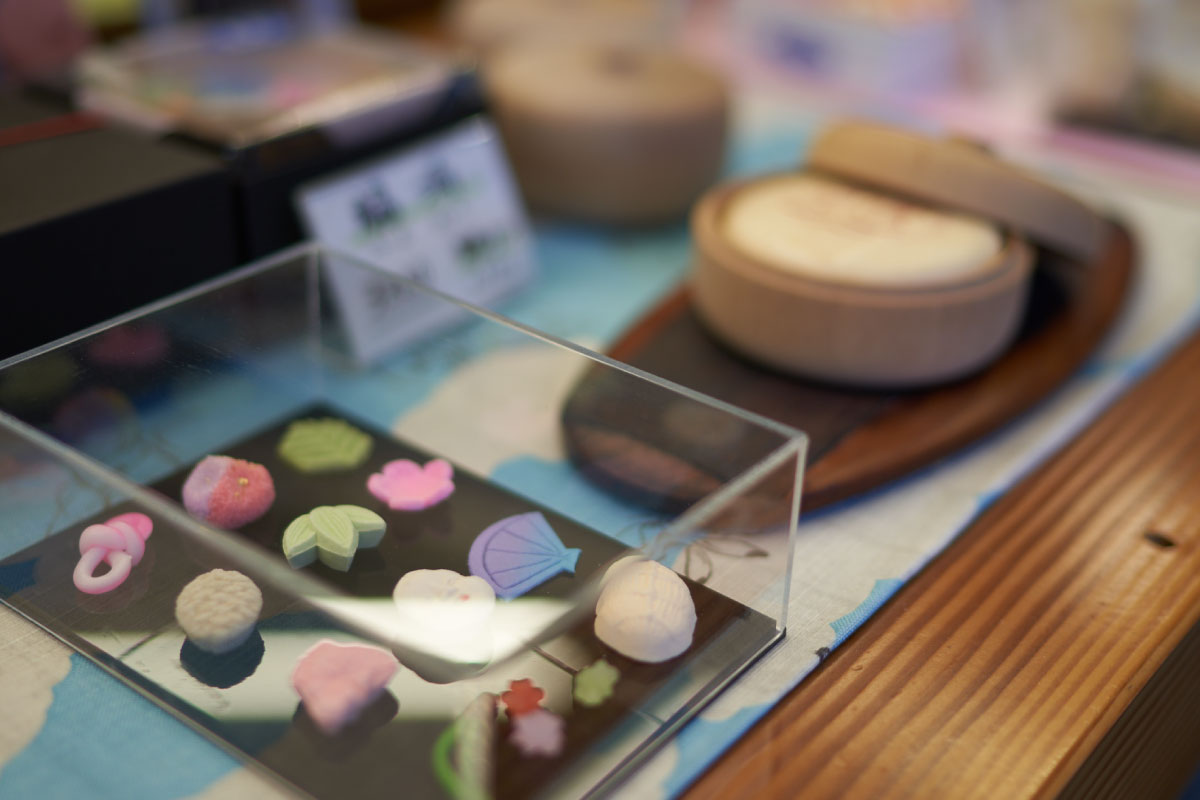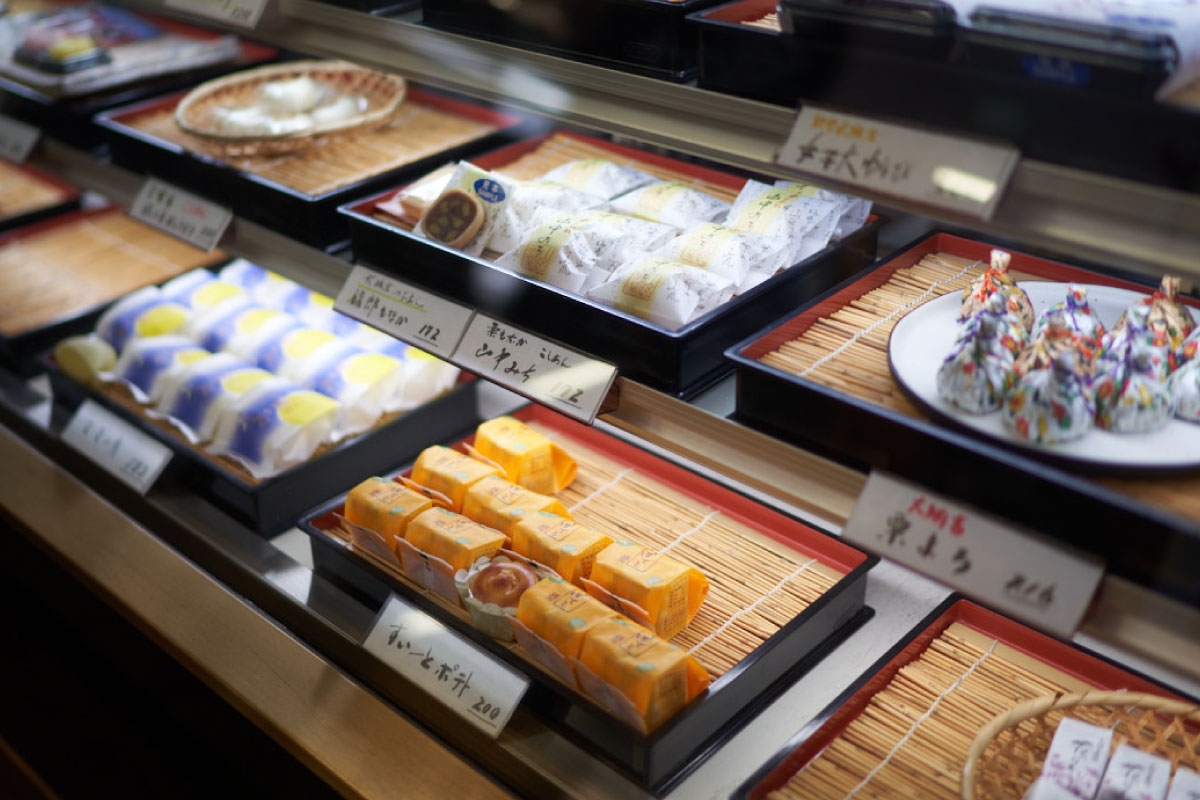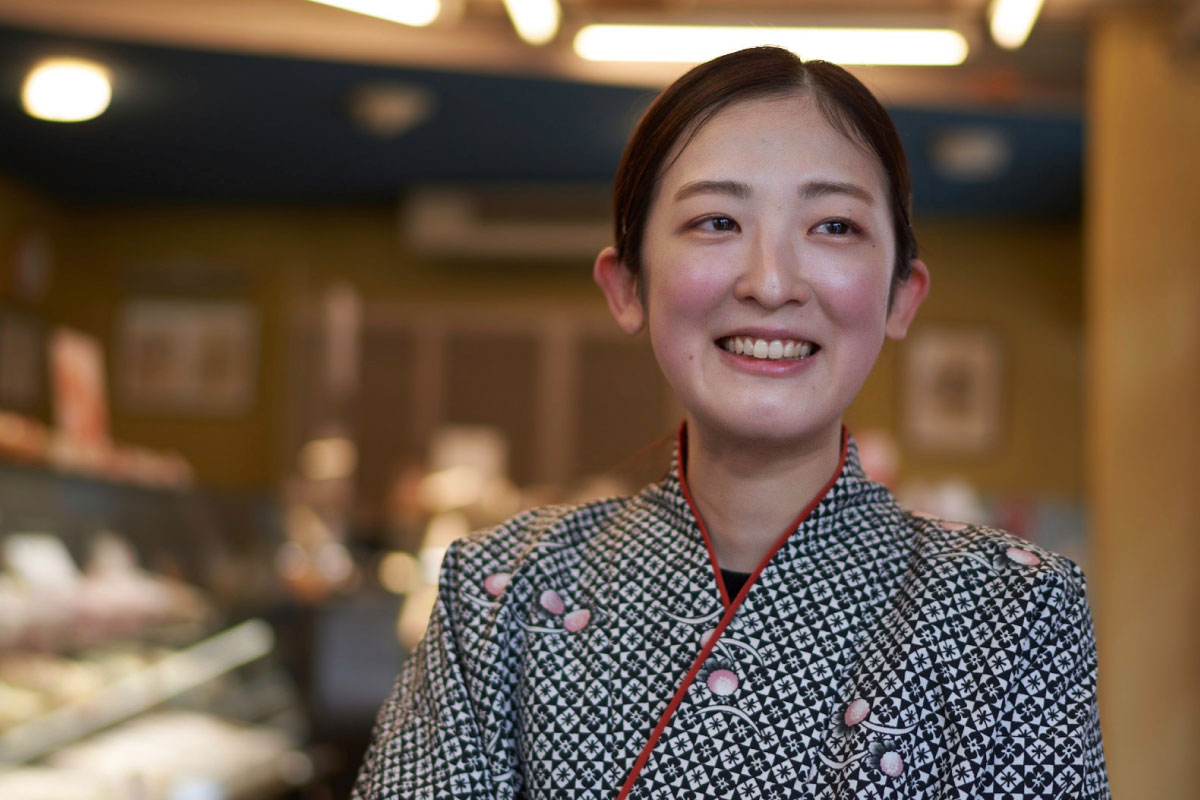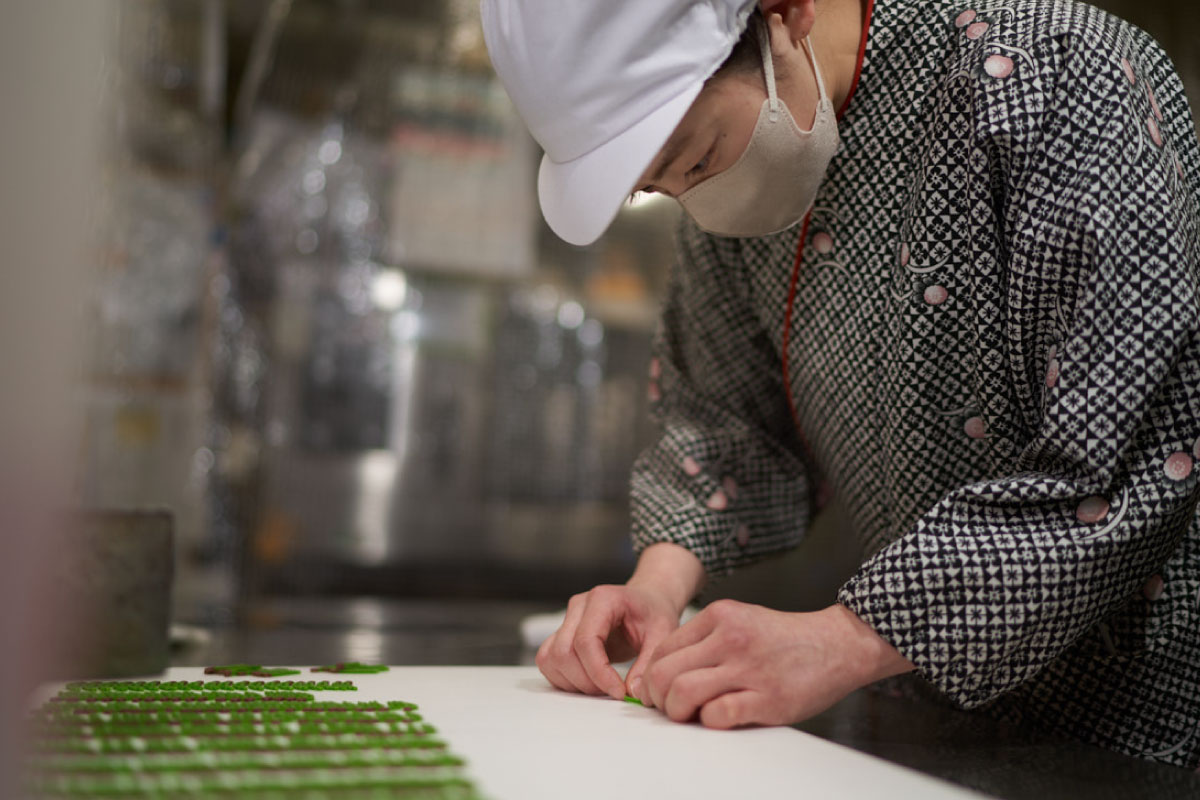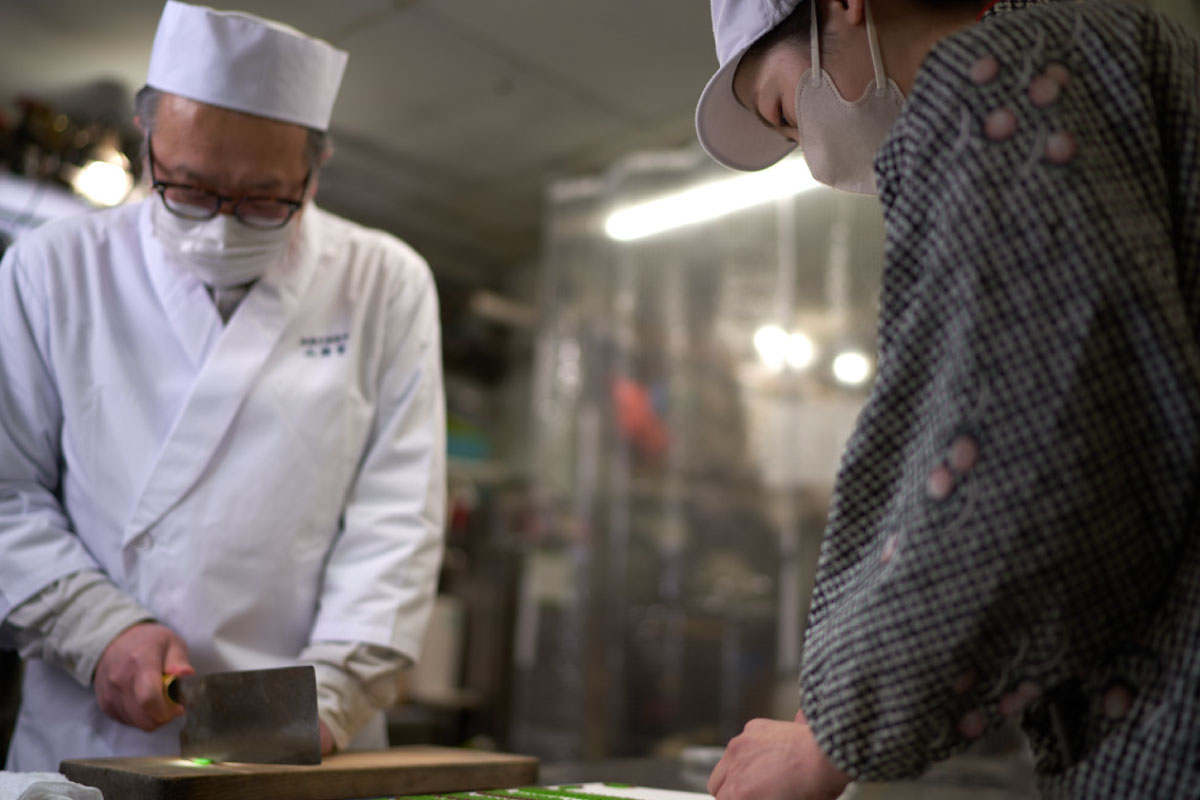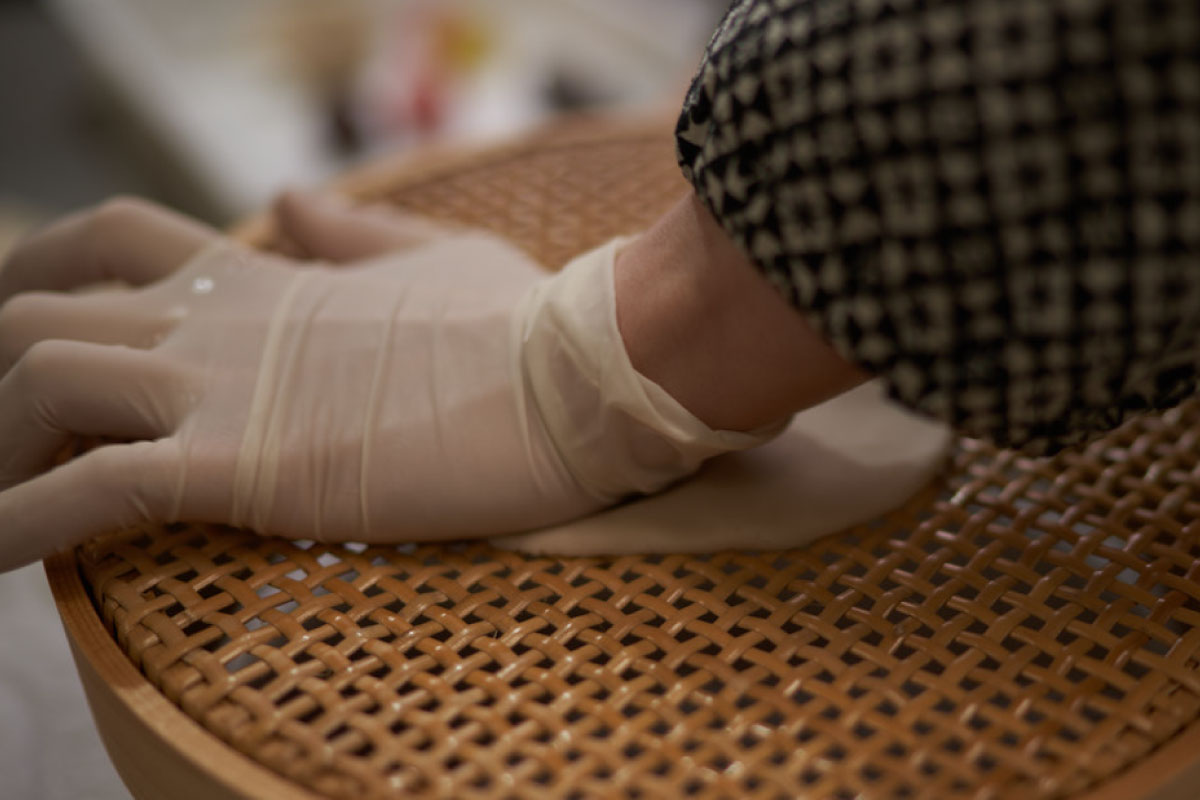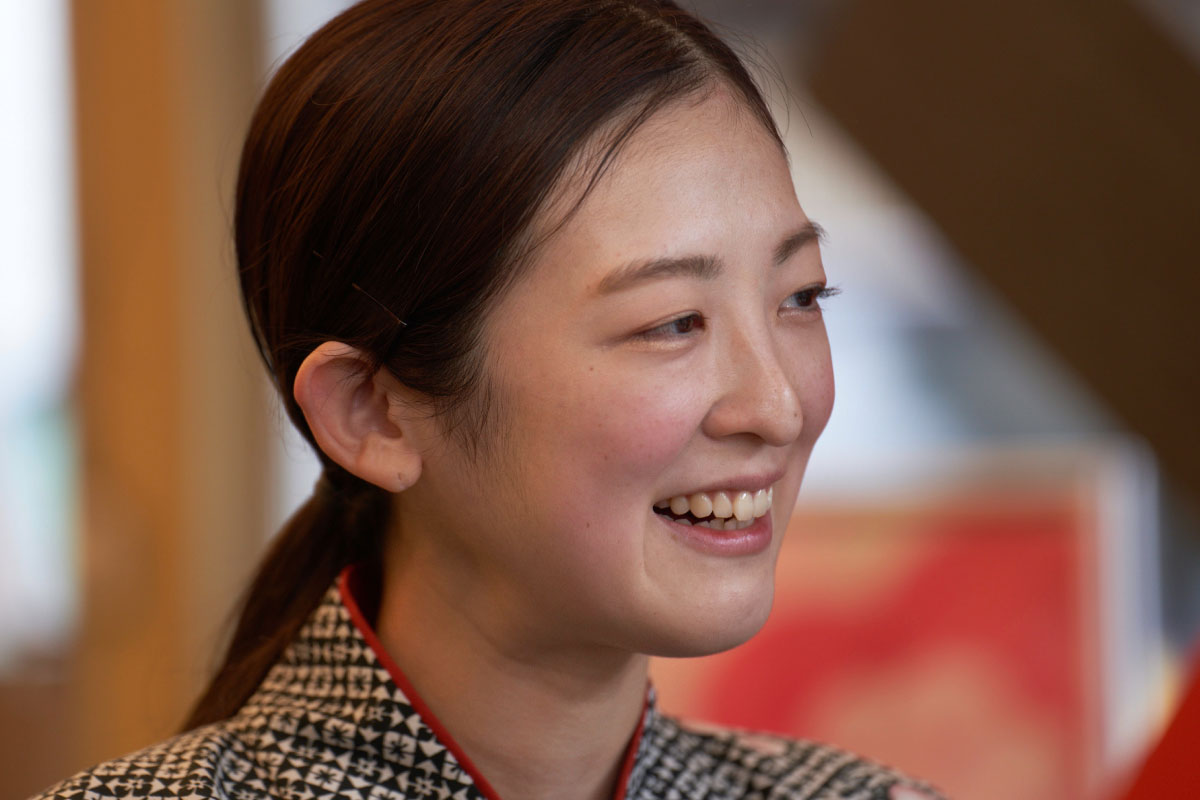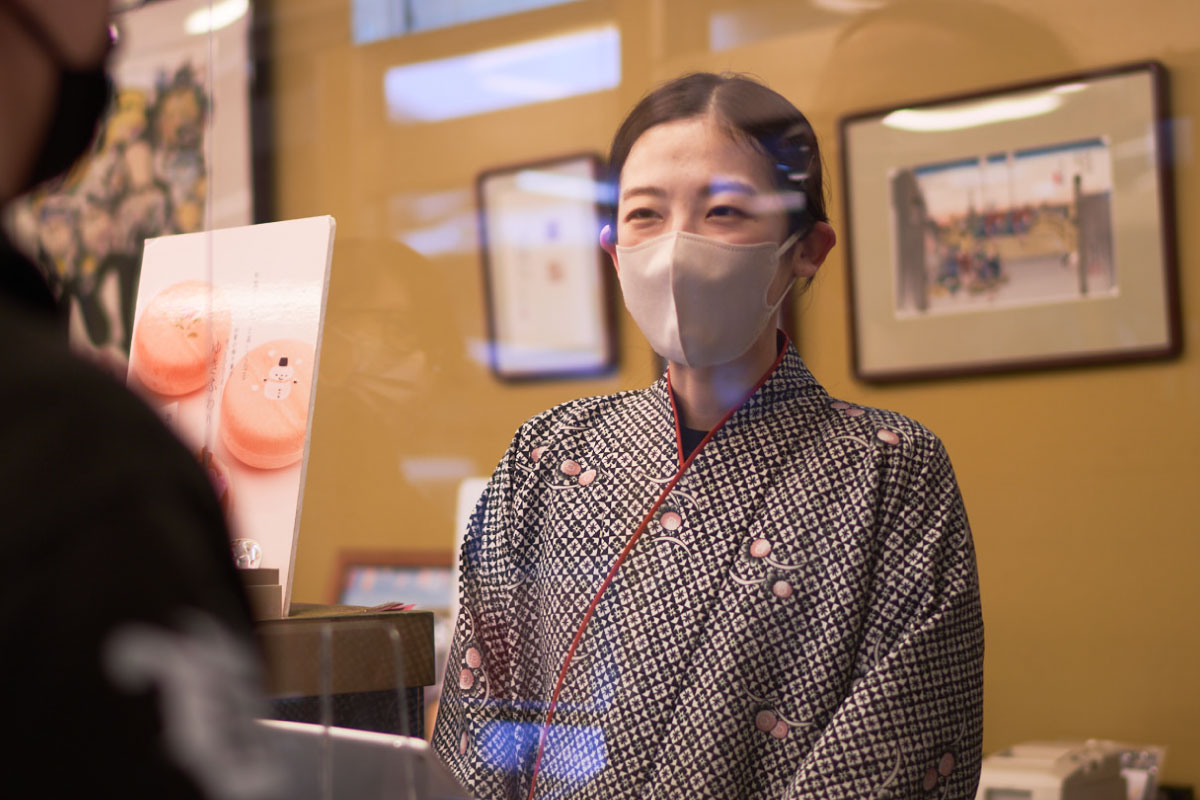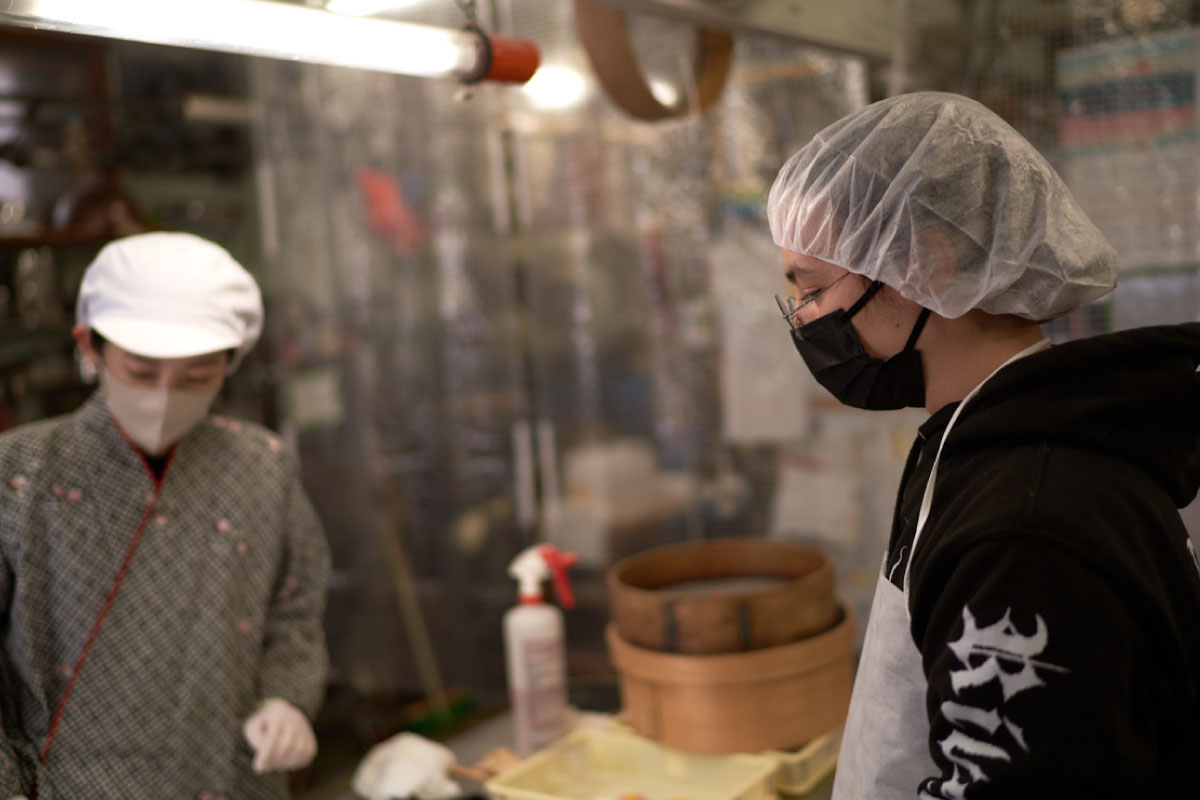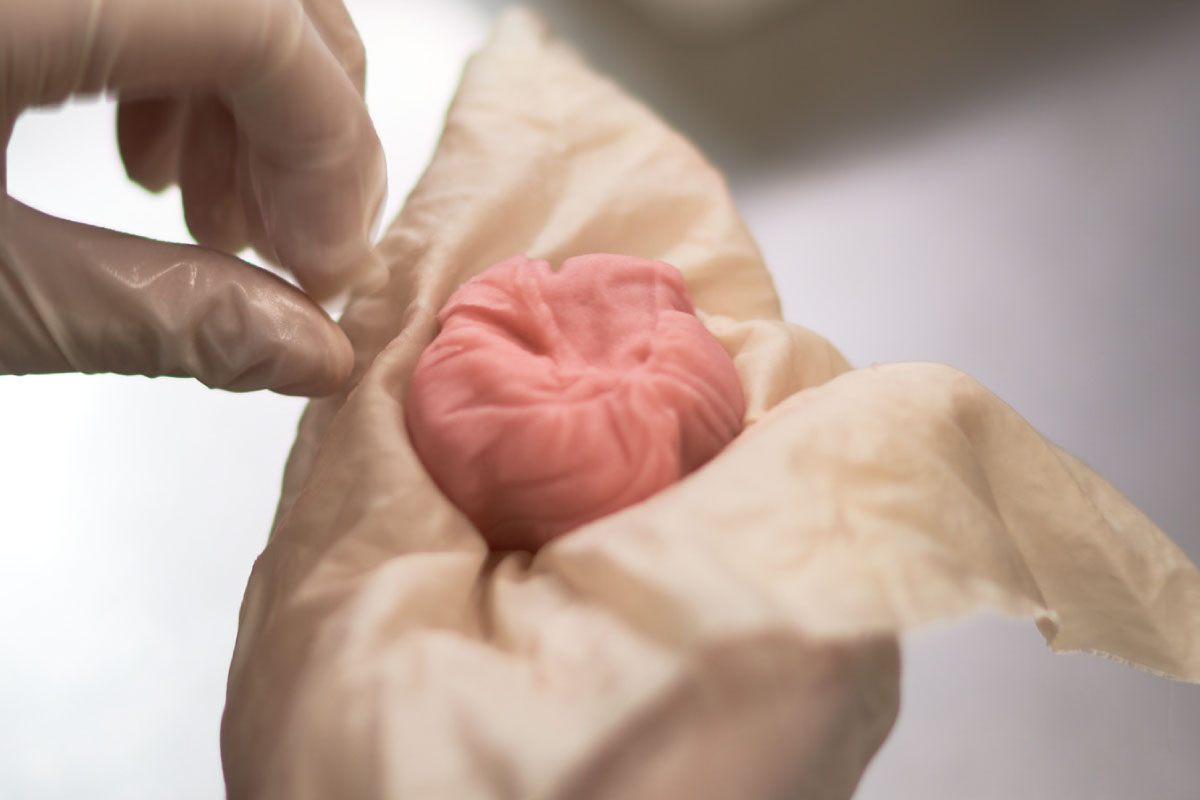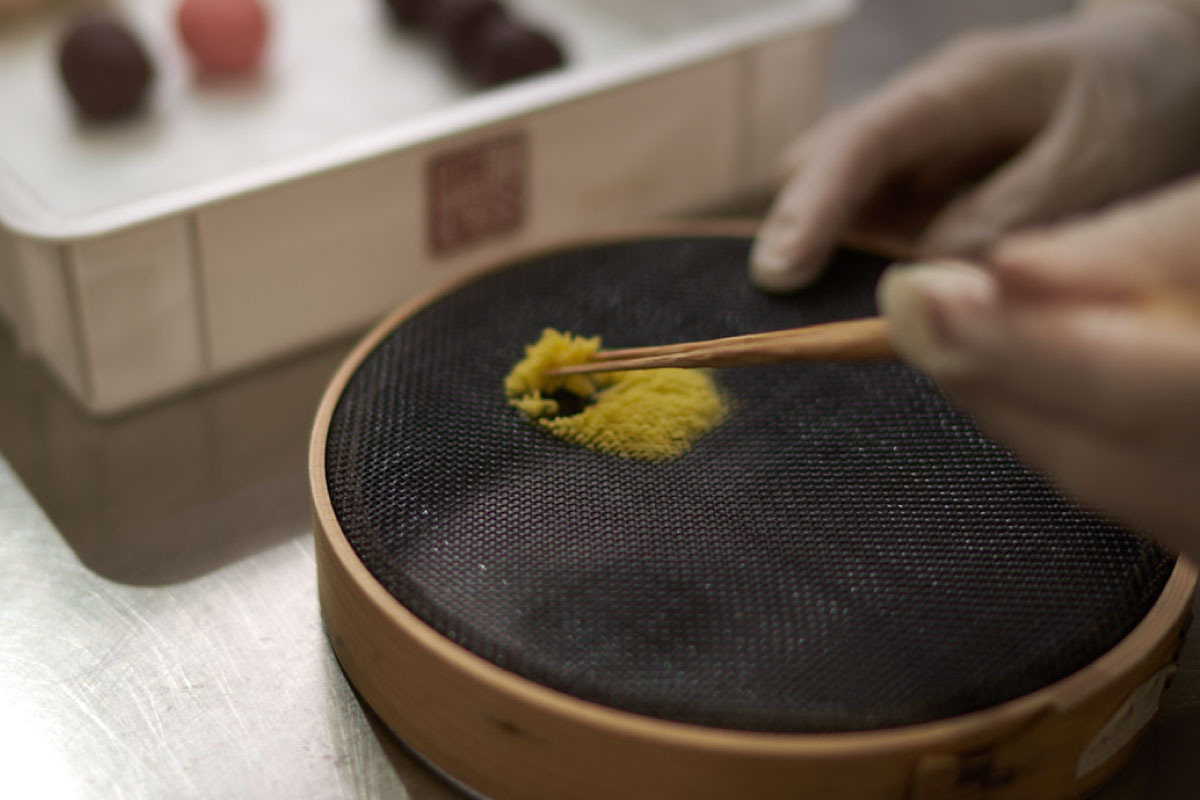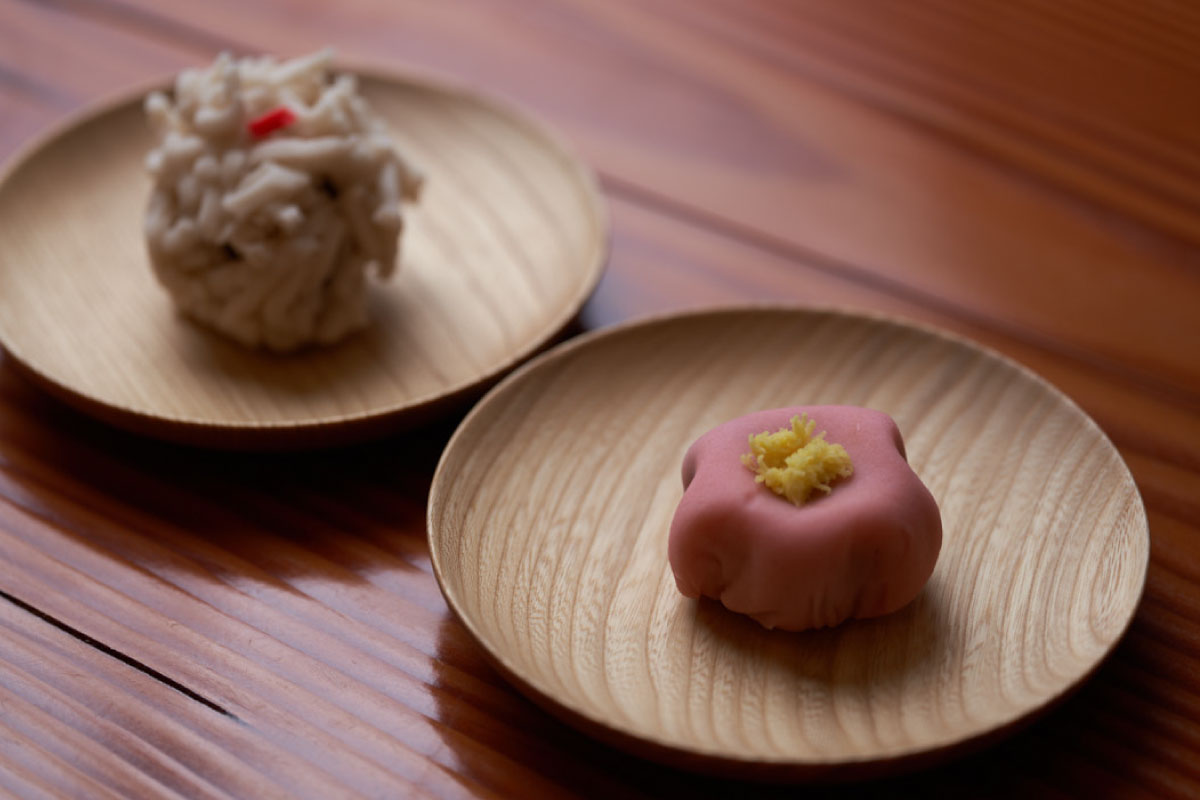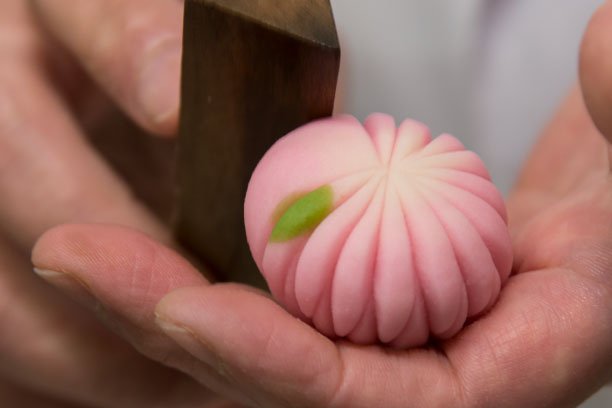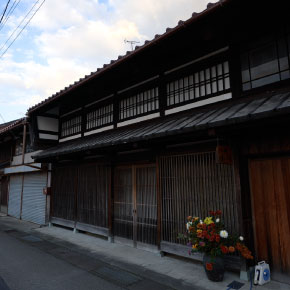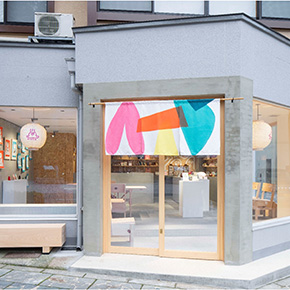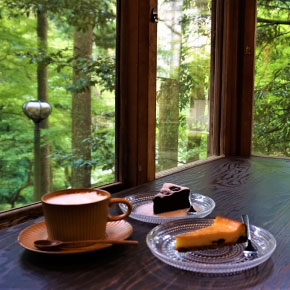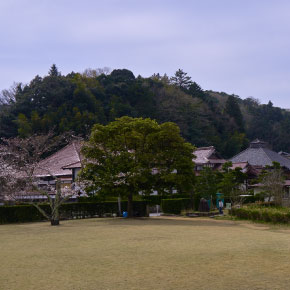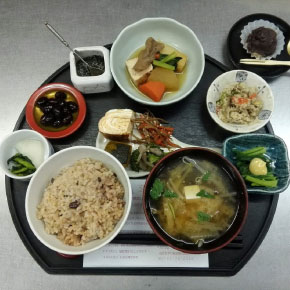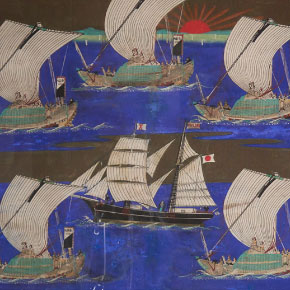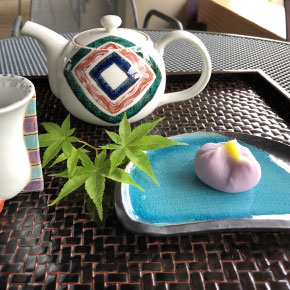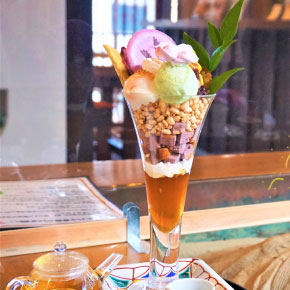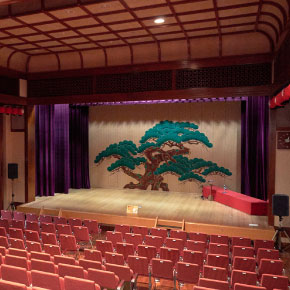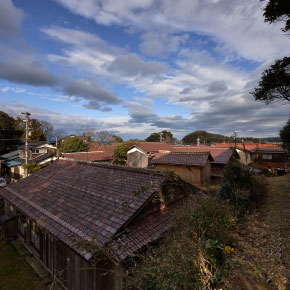Yamanaka’s Sweetspot
When walking the backstreets of Yamanaka Onsen one can find a lot of hidden gems. Shops and restaurants, old and new, catering to not only the travelers but also the locals. Established in 1905, the confectionary store Sankaidō is an essential part of the cultural townscape of Yamanaka. Following the four generations of craftsmen in her family, KURODA Asami works to inherit the business and spread the appeal of wagashi, traditional Japanese sweets.
A New Generation
Being born and raised as the daughter of a traditional confectionary household, KURODA always had a sweet tooth and grew up surrounded by manju, dorayaki and other treats well beloved in Japan. At first, she didn’t think of inheriting the family business, especially because, as is usual in Japan, her older brother was more likely to do so. As he didn’t show any interest in it and she began to think about the future though, she made the decision to take this path and started to learn the craft after graduating from university. Her father was very happy and supportive of this and driven by his daughter’s decision even took the leap of faith to focus on Sankaidō’s own artistic and creative side instead of following the industries trend to produce more casual sweets for a broader audience. A passion that shows in the beautiful sweets and makes the shop stand out.
Finding Inspiration Abroad
After learning to make confectionary for 3 years, KURODA decided the broaden her persepctive through a working-holiday year in Canada, mostly in Vancouver. There, she held sweet-making events a few times, showing her craft to an interested audience. Besides struggling to find the right ingredients in a foreign country, she also got insight into the different attitudes towards sweets in general, which in turn gave her inspiration for when she returned home.
Being away from Japan also made KURODA realize her own culture’s appeal more and so she decided to start learning about it through tea ceremony, which takes traditional motifs found in local culture and nature as inspiration. With wagashi being an important part of this culture, often serving as the first point of interest of younger people, she felt there was an even greater importance and potential for her craft to convey the appeal of Japanese culture.
Expanding the Limits of Wagashi
Even before KURODA’s time in Canada, Sankaidō started small-scale events where participants could experience authentic sweet-making. Taking her experience with different cultures into account, explaining the craft with passion to others became her strong point. She also explained that wagashi, while being a great fit with Japanese tea, don’t have to be limited to this pairing. They also work great with coffee or sake, making them a great gift to bring to friends and family, no matter their taste. With this in mind, Sankaidō also cooperates with other local businesses such as bars and even ships to a few international customers.
For KURODA, wagashi are a part of her feeling of home. Not only does a simple manju with a warm drink help her relax after a hard day of work, but the creativity in her craft also gives her space to express her appreciation for both Japanese culture and the culture of her hometown Yamanaka Onsen. Why not come and try your hand at it too under her guidance?
